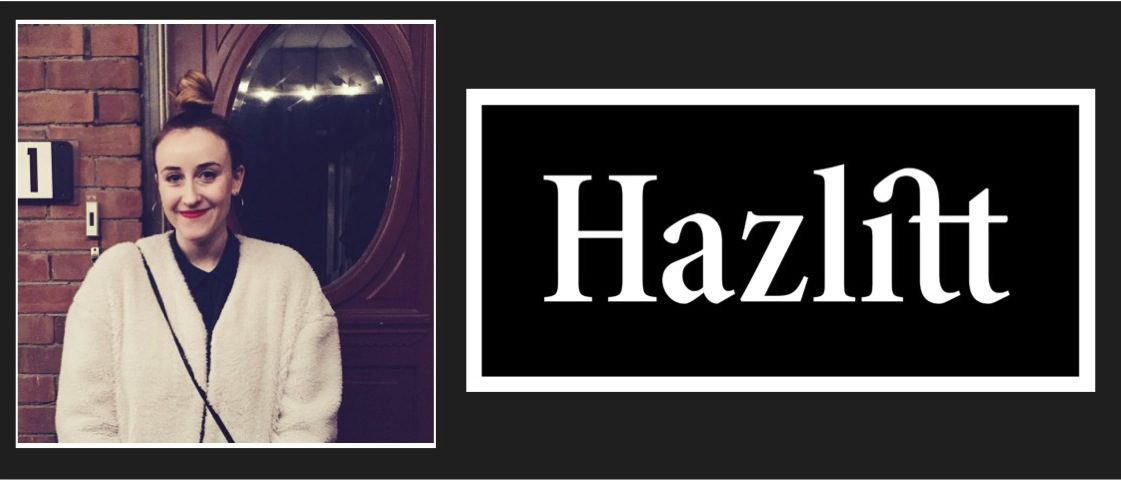Four editing tips from Hazlitt senior editor Haley Cullingham
Eleven of the magazine pieces she edited last year have been nominated for NMA awards.
By Ilana Reimer
Haley Cullingham feels very privileged: eleven of the magazine pieces she edited last year—eight for online magazine Hazlitt and three for quarterly print magazine Maisonneuve—have been nominated for this year’s National Magazine Awards on June 10.
But it’s not just the nominations that have the senior editor, digital, at Penguin Random House Canada and Hazlitt’s senior editor feeling this way. Over Cullingham’s last seven years as an editor—she was editor-in-chief of Maisonneuve before joining Hazlitt full time in October 2015—she has learned that the role can extend far beyond just adjusting paragraphs and fixing tenses.
The job has given her opportunities to put forward stories that need a platform and recognize writers who deserve attention.
“As a woman, I entered an industry that was dominated by men,” Cullingham said in an email. “But as a straight, cis, white woman from a middle-class background, I’ve been afforded all kinds of privileges. The most important thing media outlets can do right now is make sure their mastheads and bylines reflect the real world.”
So how does Cullingham shape pieces so successfully?
“It’s less a publication-by-publication adjustment than a piece-by-piece one,” she said. “The main difference between my work at Hazlitt and my work at Maisonneuve was the experience of editing for the Internet vs. editing for print. At a print mag, you’re working against a ticking clock—the timeline is an active force in how you shape the piece.”
Here’s what works for her:
It all starts with the pitch
Usually, it’s the writer’s voice that hits her first. She looks for scenes, characters, research and expressive prose. “As an editor, you’re looking for the same thing you do as a reader: something that makes you want to keep reading.”
Asking questions helps
Sometimes it can be difficult to stay true to a writer’s voice, especially when there is a limited time-frame. “As a writer, I love when an editor points out a problem and lets me solve it,” Cullingham said. “So as an editor, I strive to do that.”
Open communication with the writer helps to build a trusting relationship. That way, if a writer feels their voice is being lost in the edits, they can speak up about it. “But sometimes, deadlines win,” she said. “You hope the writer understands that this isn’t an adversarial process. Everyone has the same goal: to make the piece the best it can be.”
Cullingham finds it easiest to provide feedback in writing—using email and track changes in the document—but depending on what is best for the writer, she’ll also speak on the phone or in person to go over the piece.
Trust the process
Cullingham moves between pieces to give herself time to think about each edit. “Space from the story will allow new solutions to emerge,” she said. Being very visual, she likes having everything laid out in front of her. Normally she edits on screen, but if the piece is longer than 5,000 words or she’s struggling with its structure, she may print it.
Typically, Cullingham does between two and seven edits on any given story. If she gets tired during copy editing, she’ll often read the piece backwards. “It can help you notice errors that you wouldn’t when you’re caught up in the flow of the piece,” she said.
The editing process can take a week, a few months, or even a year. It depends on the story. “I’m lucky—there’s a nice variety in the pieces I get to handle,” said Cullingham. “So it’s always a little different.”
Write when you can
Paying attention to your own creative urges can be tough, especially with a busy schedule. Typically, Cullingham juggles about 30 pieces simultaneously for Hazlitt. Most of her good ideas come while she’s on a bus or train, heading somewhere. “I’ve been trying to recreate that in-between feeling without buying tickets,” she said.
Cullingham finds it important to remember what it’s like being on the other side of the editing process. “I’m still figuring out how to do this, really,” she said. However, she does try to set aside Sundays for coffee and writing.
Being an editor involves balancing a lot of relationships simultaneously, a feat which can be highly exhausting and lead to burnout. But it has upsides too. “I get to talk about and think about words with smart, interesting people all day long, and learn about things I never would otherwise.”
Ilana Reimer is an Algonquin College journalism grad, freelance writer and punctuation enthusiast.
lana Reimer is a journalism student at Algonquin College. She contributes regular freelance work to Metro Ottawa and has worked with the Canada Science & Technology Museum Corporation to edit content for a special project called Innovation 150.

